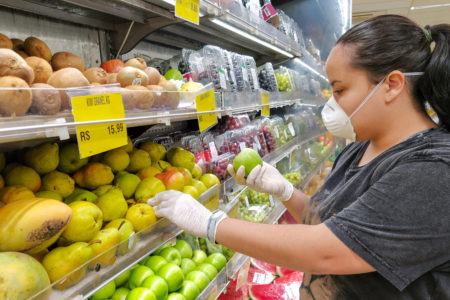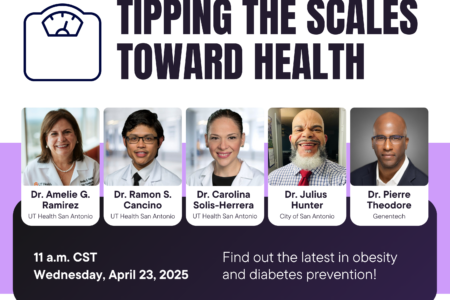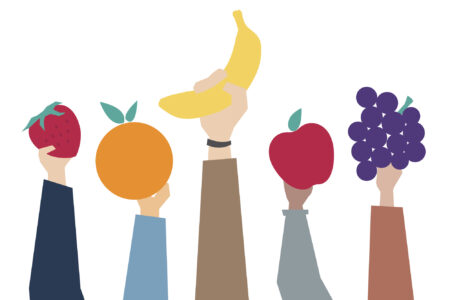
Share On Social!
Lack of nutritious food can result in countless physical, social, and mental health complications.
For many Latino families, governmental assistance programs, such as the Supplemental Nutrition Assistance Program (SNAP), put food on the table and uplift out of poverty.
But health experts say federal food aid needs expansion to help families in need.
Fortunately, the Biden administration recently announced the modernization of the Thrifty Food Plan—used to calculate SNAP benefits—and a 25% rise the average SNAP benefit, the largest single increase in the program’s history.
“The background formula was based on food preparation costs and nutrition standards that were developed in 1975,” Emily Weikert Bryant, executive director of Feeding Indiana’s Hungry told the Indy Star. “(The update) better reflects 21st century nutrition standards, food preparation needs and ensuring that those that are on the program can better afford the healthy foods they need.”
Modernizing Nutrition Security and SNAP
Societal safety nets play a significant role in many people’s lives.
When those safety nets are neglected or overlooked, it can cause monetary and social insecurity — and it can lead to a host of poor health outcomes.
The USDA recently published its re-evaluation of the Thrifty Food Plan, which was last tweaked in 2006 but hasn’t had major overhauls since 1975.
This re-evaluation will now consider factors that impact families now, including:
- Current food prices
- What Americans typically eat
- Dietary guidance
- Nutrients in food items
“For example, the revised plan includes more fish and red and orange vegetables to align with recommendations in the Dietary Guidelines for Americans, 2020-2025,” the USDA states. “Additionally, the plan was calculated using updated purchasing data – collected from stores versus self-reported by households – to reflect the current price of foods in today’s marketplace.
“The revised Thrifty Food Plan also includes a modest increase in calories to reflect the latest data and support an active lifestyle.” 
The updated plan includes a 25% increase in SNAP benefits, NPR reports. The average monthly per-person benefits will rise $36, from $121 to $157, for the 42 million people enrolled in the program.
As a result, the average SNAP benefit – excluding additional funds provided as part of pandemic relief – will increase for the Fiscal Year 2022 beginning on Oct. 1, 2021.
“A modernized Thrifty Food Plan is more than a commitment to good nutrition – it’s an investment in our nation’s health, economy, and security,” Agriculture Secretary Tom Vilsack said in a statement. “Ensuring low-income families have access to a healthy diet helps prevent disease, supports children in the classroom, reduces health care costs, and more. And the additional money families will spend on groceries helps grow the food economy, creating thousands of new jobs along the way.”
These families and individuals have historically benefited from the research found in the USDA’s Thrifty Food Plan, which is an analysis of “cost to purchase groceries for a family of four to meet the nutritional needs of an average person consuming a healthy, cost-conscious diet at home.”
They build these recommendations based on a family of four. This includes an adult male and female, ages 20-50, and two children, ages 6-8 and 9-11.
Latinos and Lack of Nutrition Security
Food insecurity is prevalent in the United States, especially in Latino and Black communities.
Latino and Black households are more likely to suffer food insecurity (16.2% and 21.2%, respectively) than the national average (11.1%), according to USDA data.
“Despite their best efforts to make healthy choices in stores, three-quarters of parents reported difficulty shopping at grocery stores due to the prevalence of unhealthy foods and children’s preference for them,” Ramos writes in an Op-Ed in The Hill. “Junk food marketing especially targets Black and Latino children, who are more likely to view fast food advertising compared to their White peers. This trend has become more pronounced over the last several years.” 
In schools, school meals are rising as a solution to both food insecurity and nutrition insecurity, especially for students of color.
But for Latino students, many attend schools with high levels of access to unhealthy foods and sugary drinks. Latino students ate or drank 47 more “low-nutrient” calories per day than their peers, according to a Salud America! research review.
Now COVID-19 is worsening food access.
“USDA is right to address the barriers of costs, time and transportation to healthy eating facing SNAP participants,” Ramos writes in an Op-Ed in The Hill. “However, USDA should also focus on the role of food industry marketing, which disproportionately targets people who participate in SNAP and others with low incomes. Consumers should not have to fight an upstream battle alone against the many factors that conspire to serve food industry profit over their health.”
What You Can Do
As these expansions to SNAP begin to impact Latinos and families, policy leaders have more work to do to ensure nutrition security.
The University of Connecticut’s Rudd Center for Food Policy & Obesity offers suggestions for actions that federal, state and local governments can take, including: Creating nutrition standards for kids’ meals and eliminating unhealthy food and beverage marketing to children as a tax-deductible expense.
Moreover, their recommendations include how public health advocates and practitioners can push for changes to these marketing practices.
“Develop campaigns to increase public awareness of the vast amounts of primarily unhealthy fast-food advertising, especially advertising that disproportionately targets children, teens, and communities of color,” the Rudd Center report states. “Support youth-led counter marketing campaigns to expose marketing practices by the top fast-food advertisers.”
You can also make a difference in your community’s nutrition.
Download a Salud America! Health Equity Report Card!
The report card shows many local children live in food deserts, have low food access, and get SNAP food benefits. Then you can compare it to your state and to the country.
Email your Health Equity Report Card to community leaders and share it on social media. Then use it to make the case to address food insecurity and nutrition security where help is needed most!
Explore More:
Healthy FoodBy The Numbers
1
Supermarket
for every Latino neighborhood, compared to 3 for every non-Latino neighborhood



